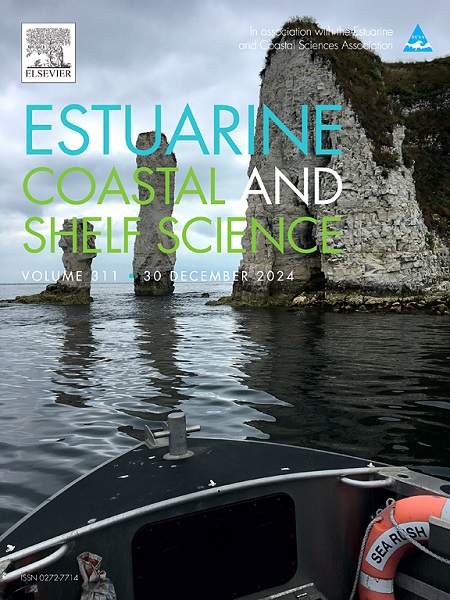基于全基因组基因分型和小气候数据的物种生理分布模型的生境适宜性评价与预测
IF 2.6
3区 地球科学
Q1 MARINE & FRESHWATER BIOLOGY
引用次数: 0
摘要
微生境尺度的热异质性和种内遗传变异共同决定了气候胁迫下马尼拉蛤(Ruditapes philippinarum)的生境适应性。通过心脏热性能分析和对四个中国沿海种群的全基因组关联分析确定的耐热基因型获得了生存优势,特别是在幼鱼通常挖洞的5厘米深度。温度模拟揭示了潮间带明显的垂直分层,深埋(10厘米)提供了对极端高温的热缓冲,并创造了关键的微避难所。然而,极端的夏季温度降低了耐热和热敏感基因型的栖息地适宜性,特别是在中国南方,那里的热应激最严重。通过整合全基因组遗传图谱、生理性状和微生境温度数据,建立了一个生理物种分布模型,该模型强调了微生境变异性和种内多样性在沿海系统中的生态重要性。这些结果建立了一个控制垂直分层沉积物热适应的基因型-微生境匹配原则,对沿海生态系统中无根物种具有指导意义。这些发现增强了气候变化下底栖生物物种的预测能力,并为河口和沿海资源的可持续管理策略提供了信息。本文章由计算机程序翻译,如有差异,请以英文原文为准。
Habitat suitability assessment and prediction using a physiological species distribution model based on whole-genome genotyping and microclimate data
Microhabitat-scale thermal heterogeneity across sediment burial depths and intraspecific genetic variation are demonstrated to jointly determine habitat suitability for the Manila clam (Ruditapes philippinarum) under climate stress. Heat-tolerant genotypes, identified through cardiac thermal performance assays and genome-wide association analysis of four Chinese coastal populations, gain survival advantages particularly at 5 cm depth where juveniles typically burrow. Temperature simulations revealed pronounced vertical stratification in intertidal flats, with deeper burial (10 cm) providing thermal buffering against extreme heat and creating critical microrefugia. However, extreme summer temperatures reduce habitat suitability for both heat-tolerant and heat-sensitive genotypes, especially in southern China where heat stress is most severe. By integrating genome-wide genetic profiling, physiological traits, and microhabitat temperature data, a physiological species distribution model was developed that highlights the ecological importance of microhabitat variability and intraspecific diversity in coastal systems. These results establish a genotype-microhabitat matching principle governing thermal adaptation in vertically stratified sediments, with implications for sessile species across coastal ecosystems. These findings enhance predictive capacity for benthic species under climate change and inform sustainable management strategies for estuarine and coastal resources.
求助全文
通过发布文献求助,成功后即可免费获取论文全文。
去求助
来源期刊
CiteScore
5.60
自引率
7.10%
发文量
374
审稿时长
9 months
期刊介绍:
Estuarine, Coastal and Shelf Science is an international multidisciplinary journal devoted to the analysis of saline water phenomena ranging from the outer edge of the continental shelf to the upper limits of the tidal zone. The journal provides a unique forum, unifying the multidisciplinary approaches to the study of the oceanography of estuaries, coastal zones, and continental shelf seas. It features original research papers, review papers and short communications treating such disciplines as zoology, botany, geology, sedimentology, physical oceanography.

 求助内容:
求助内容: 应助结果提醒方式:
应助结果提醒方式:


